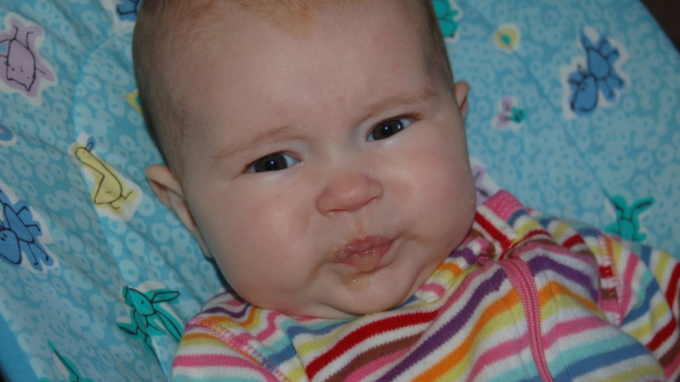
No one wants to be told what to do. The more someone tells you what to do or believe, the more you will resist — especially if it is something new. I often show people this picture of my daughter as a baby, getting her first spoonful of solid food.
Keep that image in your mind as you think of your experience in school, college, and the workplace. How many times have you stopped yourself from expressing that same emotion? As we mature, we learn to control our emotions especially in the face of authority figures. Our entire society and its institutions have been designed for control. Rejection of that control creates risks to efficiency — it slows things down. It requires engagement.
Control was expedient in an era of mechanical technology and production — when people were largely doing repetitive work to produce, service or deliver goods. The faster they did that work, with the least friction, the more profitable the organization. The 20th century is a story of molding people to do this repetitive work. To do so required standardization. With standards comes competition and judgment as people fail, meet, or exceed the standard. Rejection of that control created unwanted friction.
In the 21st century technology is rapidly absorbing routine tasks — from production to services to delivery. People are no longer needed for these tasks. But the way we parent, educate, manage, and reward people is stuck in the cultural norms of a world that is rapidly disappearing. It is creating huge risks for our organizations and anxiety for individuals and a quickly evolving culture clash.
What does this new world look like — a world where organizations can operate with fewer people?
People will be the engines of innovation — creating new products, new organizations, and new markets dynamically by using their unique qualifications to create, form relationships, negotiate, make decisions, and analyze. Most differentiating, people can see and address white spaces — things that do not already exist — and determine whether those gaps represent a threat or opportunity. And to find those white space, they need to be rewarded for rejecting and questioning the status quo.
People are critical to innovation because they are unique in their emotional capacity. Initially, people use emotions as powerful guides to assess opportunity and risk. Those emotions are the leading edge of innovation and happen before we can even think coherently about something. As people process emotions they express them in art. The reaction to art prompts people to find words that create shared meaning. As that meaning is negotiated, patterns emerge and they can be researched, standardized, and turned into technology.
This innovation process historically has spanned decades, locations, and organizations. It was implicit and impossible to manage because of its complexity. It also led to enormous waste as investment was scattered across portfolios to accommodate the unknown and hedge against the unknown.
But you can’t tell people to be creative. You have to create the environment in which they can be creative — and having a governance model focused on efficiency will backfire. In this new world, control is for amateurs.
The Internet and the social technologies that leverage it provide the infrastructure to connect, create, and communicate in multiple complex networks. This has rapidly accelerated innovation, both in positive and negative ways — disorienting individuals and organizations while both try to make sense of what is real and meaningful. There are few controls, creating chaos and clustering, which pits one group against another.
Traditional organizations, largely optimized for the past century, are scrambling to catch-up and starting to realize that it’s not just about technology but also about the behaviors and culture. Their rigid, hierarchical governance models are breaking when met with the fast-moving, networked model of the open web. Few traditional or digital-first organizations are maximizing the potential of technology. Traditional organizations have created complicated governance structures that remove most risk but also shut out most opportunities — they have too much control. Web-native companies are innovating quickly but opening themselves and society up to great risks — they have no controls.
How do we create a governance model that rapidly adapts to opportunity but also limits risk? Governance that feels like a trellis vs a cage? How do we avoid control but ensure controls are in place? And how do we get people to change, without telling them what to do?
This is, in large part, the work of community professionals; to harness the distributed power of a network while creating controls that ensure the safety of its members and its culture. Increasingly organizations are seeing it as a model for corporate governance — shifting from rigid control to a connected ecosystem with controls.
That structure empowers people — and is more palatable.
